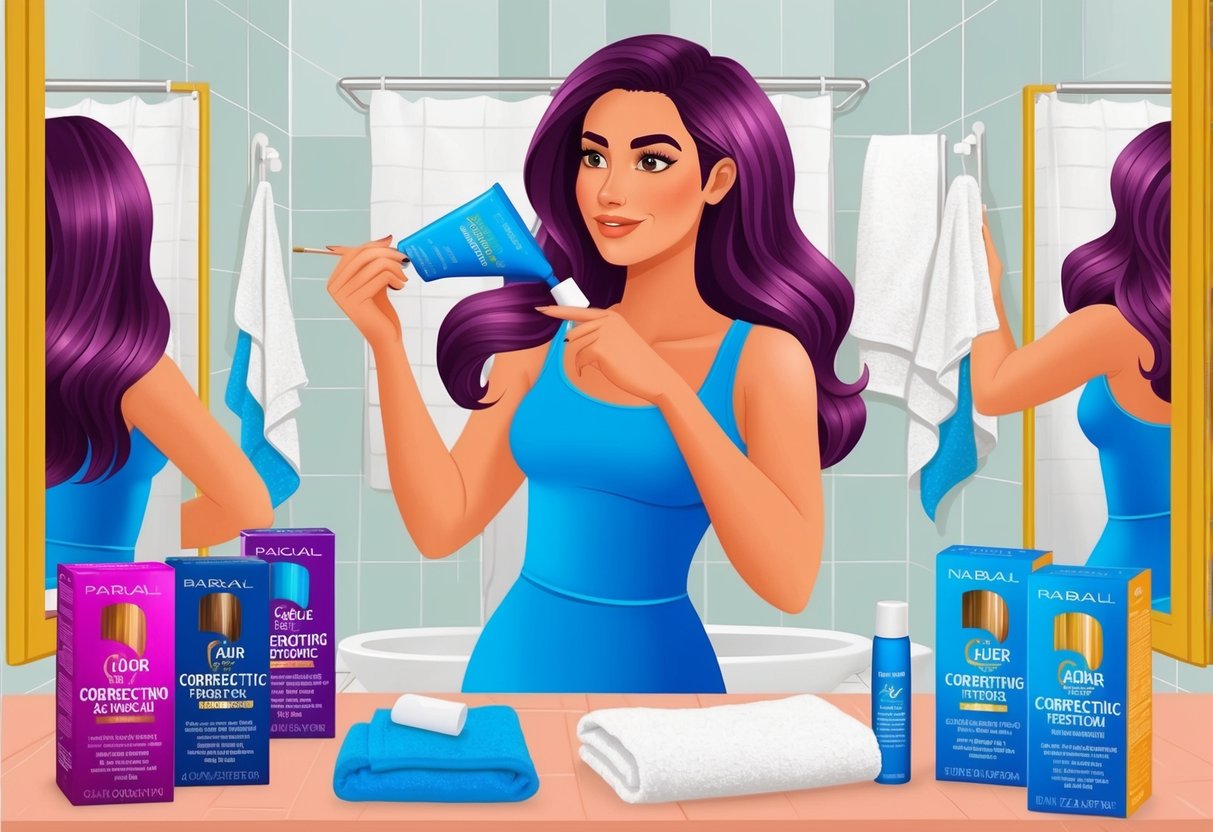
Essential Tools and Products for At-Home Color Correction
Prepping for at-home color correction is easier and safer when using the right supplies.
Proper selection minimizes hair damage and helps prevent further mistakes during the correction process.
Choosing the Right At-Home Color Kits
Selecting a quality at-home color kit is essential for achieving reliable color correction results.
Look for kits specifically labeled for use in color correction, root touch-up, or toning.
They often include detailed instructions, gloves, an applicator brush, and the right developer strength for home use.
Opt for brands known for gentle formulas, especially if your hair has already been chemically processed.
When covering unwanted tones, ash-based dyes help counteract brassiness, while gold or copper hues can neutralize dull, flat results.
Match the kit to your hair’s current shade and correct for undertones; for instance, blue-based kits reduce orange hues, and purple tones address yellow.
Selecting the right color kit also involves reading user reviews and noting the recommended time for processing and aftercare instructions.
Skipping the allergy test is a common mistake—always perform it, even with familiar brands.
Must-Have Color Correction Products
Several products make DIY color correction more manageable and help protect hair health during the process.
Clarifying shampoo helps remove surface-level dye, especially after over-darkening or if results are too intense.
Dish soap or kitchen soap can also help fade unwanted tones rapidly in emergencies, as confirmed by Real Simple’s hair dye removal tips.
A toning shampoo (such as blue or purple shampoo) neutralizes brassiness and unwanted pigment, particularly in blonde or lightened hair.
Color removers, formulated for at-home use, safely lift artificial pigment without excessive damage when used as directed.
Conditioning treatments and protein masks strengthen hair that may be weakened after a dye mishap.
Other helpful items include an applicator brush for precision, gloves for hand protection, and non-metal bowls for mixing.
The right tools and products can mean the difference between a quick fix and a prolonged color correction process.
Fixing Uneven Hair Color
Uneven color can result from missed spots, poor saturation, or incorrect timing.
Addressing these issues at home requires patience, the right products, and careful technique.
Blending Roots and Ends
If the roots are lighter or darker than the ends, the main goal is to create a seamless transition.
Start by identifying whether the roots are too bright or too dark compared to the rest of the hair.
This step determines whether to tone down or brighten up the roots.
Apply a semi-permanent color or color-depositing conditioner that matches the overall shade.
Focus only on the area that needs adjustment—usually the roots or mid-lengths.
For a dramatic difference, consider doing a “root smudge” using a color just slightly darker than the ends to blend the line and soften harsh demarcation.
Make sure to check processing times carefully, as leaving product on too long can cause additional unevenness.
Use a wide-tooth comb to gently blend the product down from the roots into the ends, creating a natural gradient.
If mistakes persist or the difference is extreme, consulting a professional is the safest choice.
Correcting Patchy Spots
Patchy spots can be caused by uneven application, missed sections, or insufficient product.
To fix patchiness, section the hair into small, manageable parts.
This allows for precise targeting of the areas that need more color correction.
Apply color directly to the lighter patches only, feathering the product slightly into the surrounding areas with a small brush or gloved fingers.
Overlapping too much can darken already-balanced areas, so apply carefully and sparingly.
A timer is essential; monitor each section’s processing so the final result looks uniform.
After rinsing, use a deeply hydrating conditioner or color-repair mask.
This restores moisture and helps the new color settle evenly.
For persistent or severe patchiness, clarifying shampoo can lift excess tone, making it easier to re-color and achieve a more even finish, as suggested by Real Simple’s guide to correcting at-home hair dye mistakes.



